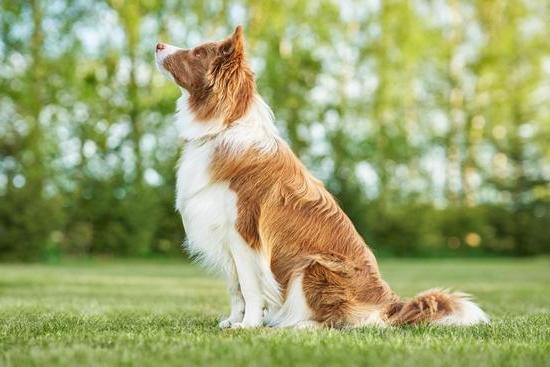Are you tired of constantly struggling to get your dog to give back a toy, especially when it’s time to clean up? In this article, we will explore the key steps in teaching your furry friend how to drop toys on command.
Training your dog can be an enjoyable and rewarding experience for both you and your pet. Understanding the importance of teaching your dog to drop toys is the first step towards building a well-behaved and obedient companion.
Choosing the right toys for training is crucial in successfully teaching your dog to drop items on command. Additionally, establishing trust and building a strong bond with your canine companion is essential. This not only sets the tone for effective training but also promotes a harmonious relationship between you and your pet.
Starting with basic commands such as sit, stay, and come lays the foundation for more advanced training, including “drop it.” Positive reinforcement and rewards play a significant role in encouraging desired behaviors from your dog. Consistency and patience are key components in successful training sessions. With these essential elements in place, we will explore various strategies to incorporate playtime into training, ensuring that both you and your pet will enjoy the process of learning together.
Choosing the Right Toys for Training
When training your dog to drop toys, it is essential to choose the right toys for effective training. The selection of toys can significantly impact your dog’s learning and understanding of the drop command. Here are some tips for choosing the right toys for training:
- Texture: Select toys with different textures such as rubber, plush, or rope. This variety can help in desensitizing your dog to holding onto a specific type of toy.
- Size: Choose toys that are appropriate for your dog’s size and breed. For larger dogs, opt for sturdy and durable toys that can withstand their chewing and tugging.
- Interactive Toys: Consider using interactive toys such as treat-dispensing balls or puzzle toys to make the training sessions more engaging and rewarding for your dog.
It is also important to assess your dog’s preferences when selecting toys for training. Some dogs may be more motivated by squeaky toys, while others may prefer fetching balls or tug-of-war ropes. By understanding what types of toys attract and engage your dog the most, you can use those preferences to your advantage during training sessions.
Additionally, rotating the selection of toys used during training can prevent boredom and keep your dog interested in learning the drop command. Introducing new and exciting toys periodically can also reinforce positive behavior and maintain your dog’s enthusiasm for training. By carefully choosing the right toys for training, you can create a fun and effective learning environment for your furry companion.
Establishing Trust and Building a Bond With Your Dog
Building trust and a strong bond with your dog is essential for successful training, especially when it comes to teaching them to drop toys. By strengthening your relationship with your furry friend, you can create a positive and conducive environment for learning. Here are some tips on how to establish trust and build a bond with your dog:
1. Spend quality time together: Dedicate time each day to engage in activities that your dog enjoys, such as going for walks, playing fetch, or simply cuddling on the couch. This will help strengthen the bond between you and your pet.
2. Use positive reinforcement: When interacting with your dog, focus on using positive reinforcement techniques such as praise, treats, and belly rubs. This will help them associate you with good things and build trust in your relationship.
3. Communicate effectively: Understanding your dog’s body language and vocal cues is crucial in building trust. Pay attention to their signals and respond accordingly to show that you are attentive and caring.
By implementing these strategies, you can lay a solid foundation for successful training sessions aimed at teaching your dog to drop toys. A strong bond built on trust will make it easier for them to understand what is expected of them during training exercises.
Starting With Basic Commands
Before you can teach your dog to drop toys, it’s important to start with building a foundation of basic commands. Teaching your dog to sit, stay, and come when called is essential for their safety and your control during training sessions. These commands also establish trust and communication between you and your furry friend.
To teach your dog to sit, hold a treat close to their nose and then slowly move your hand upwards. This will cause their head to follow the treat, which naturally makes their bottom lower into a sitting position. Once they are in this position, say “sit” and give them the treat as a reward.
For “stay” practice having your dog sit while you take small steps back. Return immediately and provide a reward if they remain seated. Lastly, for “come” use a leash during initial training sessions to gently guide your dog towards you when saying “come,” rewarding them once they reach you.
Consistency is key in teaching these basic commands. Short training sessions every day will help reinforce what they have learned until it becomes second nature for them.
Incorporating these basic commands not only sets the stage for successful toy-dropping training but also ensures that your dog knows how to respond to important cues that promote safety and obedience in various situations.
| Commands | Description |
|---|---|
| Sit | Teach by moving a treat upwards so their bottom lowers into sitting position. |
| Stay | Practice having them remain seated as you move away gradually. |
| Come | Use a leash initially for gentle guidance towards you when saying “come.” |
Introducing the Drop It Command
What Is the “Drop It” Command?
The “Drop It” command is a crucial part of training your dog to release items from their mouth on cue. This command is essential for keeping your dog safe and preventing them from chewing or swallowing objects that could be harmful. Teaching your dog to drop toys also promotes positive behavior and obedience.
Steps to Introduce the “Drop It” Command
To introduce the “Drop It” command, start by giving your dog a toy to play with. Once they have the toy in their mouth, show them a treat and say “Drop It.” Gently take the toy from their mouth and immediately give them the treat. Repeat this process several times, gradually increasing the duration between saying “Drop It” and giving them the treat. Be patient and give lots of positive reinforcement.
Building Consistency and Trust
Consistency is key when introducing the “Drop It” command. Always use the same verbal cue and hand signal to reinforce what you want your dog to do. Additionally, it’s important to build trust with your dog during this process. Never force the toy out of their mouth or use punishment if they don’t obey right away. Instead, continue practicing in short sessions, showing patience and understanding as you work with your furry friend to master this important command.
By establishing trust, being consistent with training techniques, and using positive reinforcement, you can effectively introduce the “Drop It” command to your dog’s repertoire of obedience skills.
Positive Reinforcement and Rewards
When it comes to training your dog to drop toys, positive reinforcement and rewards play a crucial role in the learning process. Dogs respond well to praise and rewards, so it’s important to use these techniques when teaching them new behaviors. Positive reinforcement involves offering something pleasant for good behavior, which can include treats, verbal praise, or physical affection.
Using Treats as Rewards
One of the most effective ways to reinforce positive behavior in dogs is by using treats as rewards. When your dog successfully drops a toy on command, immediately reward them with a treat. Make sure to choose high-value treats that your dog enjoys and only offer them during training sessions. This will create a strong association between dropping toys and receiving a tasty reward.
Verbal Praise and Affection
In addition to using treats, verbal praise and affection are also important forms of positive reinforcement. When your dog follows the drop it command, be sure to enthusiastically praise them with phrases like “good job” or “good drop.” You can also show physical affection by petting or giving them belly rubs as a way of reinforcing their good behavior.
By consistently using positive reinforcement and rewards during training sessions, you’ll not only teach your dog to drop toys effectively but also strengthen the bond between you and your furry friend. Remember that patience is key, and every small success deserves recognition and celebration.
Consistency and Patience in Training
Consistency and patience are key factors when it comes to training your dog to drop toys. Dogs, like humans, thrive on routine and repetition. Therefore, it is important to be consistent in using the same commands and methods each time you train your dog. This will help them understand what is expected of them and ultimately speed up the learning process.
In addition to being consistent, patience is crucial when training your dog. Every dog learns at their own pace, so it’s important not to get frustrated if they don’t immediately grasp the concept of dropping a toy. It may take some time for them to fully understand what is being asked of them, and it’s essential to remain calm and patient throughout the training process.
One way to maintain consistency and patience is by setting aside dedicated training time each day. This will allow both you and your dog to focus solely on the task at hand without distractions. By remaining consistent and patient during these training sessions, you’ll be setting your dog up for success in learning the “drop it” command.
| Key Factors | Recommendations |
|---|---|
| Consistency | Use the same commands and methods consistently during training sessions. |
| Patience | Remain calm and patient if your dog doesn’t immediately understand or comply with the command. |
| Dedicated Training Time | Set aside specific times each day for focused training sessions without distractions. |
Problem-Solving
When training your dog to drop toys, it is essential to anticipate that there may be instances when your dog does not immediately respond to the “drop it” command. This can be frustrating, but it is important to remain calm and patient during these moments. There are a few strategies you can use to address this issue and encourage your dog to let go of the toy.
One effective method for dealing with a dog that is reluctant to drop a toy is trading. You can offer your pet a tasty treat or another favorite toy in exchange for the one they are currently holding onto. This can motivate them to release the toy willingly and learn that dropping it leads to positive reinforcement.
Another approach is to make the toy less appealing by freezing it or applying a bitter taste deterrent onto it. By doing so, your dog may lose interest in the toy and be more inclined to let go of it when instructed.
It’s also crucial to avoid physically forcing the toy out of your dog’s mouth, as this can lead to negative associations with training and erode trust between you and your pet. Instead, focus on positive reinforcement and consistent training methods, even if progress seems slow at first. With time and patience, your dog will learn to drop toys on command reliably.
Incorporating Playtime Into Training for a Happy, Well-Behaved Dog
Incorporating playtime into training is not only a fun way to bond with your dog, but it is also an essential part of ensuring they are well-behaved and happy. By combining training exercises with play, you are able to integrate learning with enjoyment, making the process more enjoyable for both you and your furry friend.
Playtime provides an opportunity to reinforce positive behaviors in a natural and interactive way. Through games like fetch or tug-of-war, you can incorporate commands such as “drop it” while your dog is engaged and having fun. This allows them to learn in a positive environment, making it more likely that they will retain the training and respond well to commands in the future.
Additionally, incorporating play into training sessions helps release excess energy in your dog, reducing the likelihood of destructive behavior out of boredom or pent-up energy. A well-exercised dog is more inclined to listen and obey commands, making playtime an important aspect of their overall training regimen.
Ultimately, by integrating play into your dog’s training routine, you are not only addressing their physical exercise needs but also stimulating their mental capacities through learning and reinforcement. This holistic approach contributes to a well-rounded and contented pet that is a joy to be around.
Frequently Asked Questions
How Do You Teach a Dog to Drop a Toy?
Teaching a dog to drop a toy can be done through positive reinforcement training. Using treats or favorite toys, encourage the dog to release the toy on command by saying “drop” and offering a treat as a reward. Repeat this process consistently until the dog associates the command with releasing the toy voluntarily.
How Do I Get My Dog to Drop Something Bad?
Getting a dog to drop something undesirable or potentially harmful can also be achieved through positive reinforcement. Using an exchange method, offer the dog a treat or a high-value toy in return for dropping the undesirable item.
This teaches the dog that dropping something bad leads to a better reward, making it more likely to comply with the command in the future.
How Do You Teach a Dog to Drop Down?
Teaching a dog to drop down or lie down on command involves using treats and consistent verbal cues such as “down” or “lie down.” With patience and practice, encourage the dog to lower its body into position and reward them with treats when they do so correctly.
Gradually phase out treats as the dog becomes more responsive to the verbal command alone.

Welcome to the blog! I am a professional dog trainer and have been working with dogs for many years. In this blog, I will be discussing various topics related to dog training, including tips, tricks, and advice. I hope you find this information helpful and informative. Thanks for reading!





